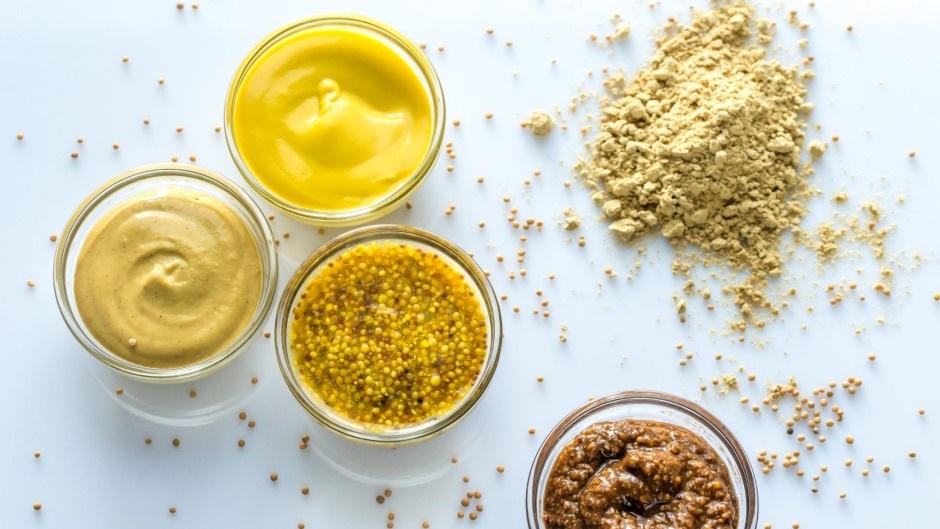Featured Image from: Good Food
Go to any supermarket and you’ll find that there are various types of the same product. Salt, for example, is sold as course rock salt, fine salt, iodized rock salt, and various types of seasoning salt. Or pepper, which is sold as whole, ground, or powdered even though they’re all the same thing but serve different purposes.
In some cases, such as pepper, it’s easy to tell what’s what and when to use the different types. But for less popular condiments and spices such as mustard, it may be difficult to spot which is which, especially for the less used dry types, and the various terms and types could all actually be referring to the same product.
Today, we’re going to differentiate the different types of dry mustard. We explain what dry mustard is, if it’s different from mustard powder or powdered mustard, and if it’s possible to use dry mustard as a substitute for regular mustard.
What Is Dry Mustard?
Dry mustard is powdered mustard seeds. It’s also known as English mustard and is a spice used to season sauces, dressings, salads, meats, and other foods that go well with its earthy, bitter flavor. Dry mustard, in its organic form, is either a dark brown or white powder because of the seeds’ color.
You can usually find dry mustard with the other spices in your grocery. It’s available in black, brown, and white dry mustard, with white being the strongest in flavor. You’ll often find it next to whole mustard seeds.
Unlike “wet” mustard (Dijon, honey mustard, or any type of mustard you can spread), dry mustard is simply powdered mustard seeds and is purely mustard. “Wet” mustard, on the other hand, involves a lot of other ingredients that either drastically change the flavor of mustard or use mustard to enhance the flavor of another ingredient.
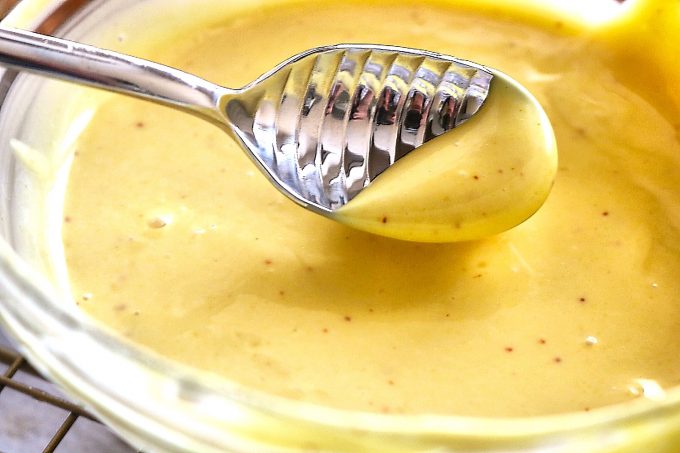
Dry Mustard vs. “Wet” Mustard
“Wet” mustard, otherwise known as “prepared mustard,” is often made from dry mustard. Prepared mustard is often produced using three types of mustard seeds — black seeds (Brassica nigra), brown seeds (Brassicar juncea) and yellow or white seeds (Sinapis alba).
These mustard seeds vary in potency, from robust and spicy to mild. The darker the mustard seed, the more pungent the flavor. Also, the flavor between dry and wet mustard is significantly different because dry mustard is simply mustard seeds crushed into a fine powder while wet mustard products are mixed with other items.
Though the yellow American version of mustard is the most popular, there are different types of mustard available in the market.
The most common types of wet mustard include:
- Yellow mustard. This traditional type of prepared mustard is made from white mustard seeds blended with salt, turmeric, vinegar and water to form a pale paste with a mild and zesty flavor. Yellow mustard is often used as a condiment for sandwiches, hamburgers and hot dogs.
- Dijon mustard. Dijon mustard is known for its sharp taste due to its ingredients (black seeds, salt, wine, herbs and spices). Dijon is often used in salad dressings and sauces. It also pairs well with mayonnaise.
- Honey mustard. Yellow mustard and honey are combined to create the sweet and tangy taste of honey mustard. This mustard is often used in salad dressings and dipping sauces.
- Whole grain mustard. Whole and semi-crushed mustard seeds create a thick mustard paste that has a coarse texture and a deep, robust taste. Since it isn’t as processed as the other mustard types, it retains most of t its nutrients.
Powdered Mustard vs. Other Dry Forms of Mustard
Dry mustard is the same as powdered mustard. It’s another name some marketers used to distinguish their products among a line of other dry mustard products. While it is technically dry, you won’t find whole mustard seeds sold as “dry mustard.” Dry mustard is known as spice, not the seed, so be careful when buying.
Mustard seeds are more flavorful than dry mustard because the latter has already been crushed and packaged, losing some of its flavors in the process. You can try to make your own dry mustard at home for a stronger powder, but if you want to save yourself the effort, dry mustard is fine as well.
Dry Mustard Substitutes
If you can’t find dry mustard in your local supermarket, you can try looking for these alternatives instead.
Mustard Seeds
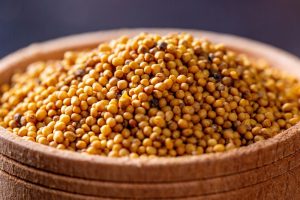 Mustard seeds can be a substitute for dry mustard as you only need to ground them to make your own dry mustard. You can use a coffee grinder, spice grinder, mortar and pestle, or simply place a handful of seeds inside a folded piece of cloth and crush it manually with a heavy object.
Mustard seeds can be a substitute for dry mustard as you only need to ground them to make your own dry mustard. You can use a coffee grinder, spice grinder, mortar and pestle, or simply place a handful of seeds inside a folded piece of cloth and crush it manually with a heavy object.
Crush your mustard until you achieve the desired consistency. Because it can’t be crushed to be totally powdered like store-bought dry mustard, homemade dry mustard cannot totally emulsify sauces or dressings and can only be used for seasoning and rubs. Also, because the dry mustard is still fresh, if a recipe calls for a cup of dry mustard, only use half a cup, as the flavor is much stronger than dry mustard.
Wasabi Powder
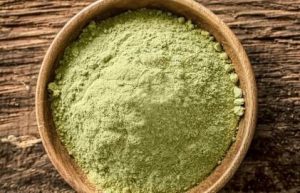
While wasabi tastes hotter than dry mustard, in small measurements, it has a similar flavor. They have the same powdered consistency and are both plant-based condiments. Some cooks and food manufacturers even opt to replace dry mustard with wasabi powder since wasabi adds an extra kick.
However, because of the hot flavor, try using half the amount of wasabi and then add the rest in small amounts until you reach a good enough flavor that isn’t too hot for you.
Also, authentic wasabi is actually a very expensive commodity due to its rarity, so be sure to check the label to see if you really are buying wasabi powder or a wasabi imitation made with horseradish. If the price is too much, use horseradish powder instead.
Horseradish Powder
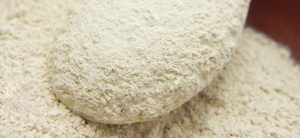
Horseradish is a relative of the mustard plant, which is why it makes a good substitute in its powdered form. Like wasabi, its flavor is similar to mustard, but has a hotter (but not as hot as wasabi) and more sour flavor.
Horseradish makes a good substitute to dry mustard as a condiment, but only in its powdered form. “Wet” horseradish products taste very different from dry mustard, as it tastes more like vinegar than the pure form of horseradish. Also, horseradish powder is only effective as a seasoning for cold dishes, since horseradish loses its spice under heat.
Turmeric
Turmeric will give you the same yellow color like mustard, as well as a similar flavor (minus the zesty punch of mustard). When using turmeric, you need not worry about overdoing its spiciness in your recipe since it is milder than dry mustard. To use turmeric as a substitute, replace it measure for measure.
A note on using these dry mustard substitutes: these alternatives might not be right for every recipe, so make sure that your preferred substitute is compatible with the other ingredients in your recipe. In some cases, the best thing to do when you’re out of dry mustard is to leave it out — especially if the recipe calls for a small amount only. If your recipe includes other flavorings, spices and ingredients, you might not even notice the missing dry mustard.
Can I Use “Wet” Mustard as a Dry Mustard Substitute?
In most cases, such as with marinades and rubs, the flavor of dry mustard and regular mustard may taste similar. For every teaspoon of dry mustard, replace it with one tablespoon of mustard.
Wet mustard is often used as a condiment for sandwiches and burgers. Some may also like to add it to their salads as a dressing. Dry mustard, on the other hand, is good as a spice marinade for meat, an addition to the sauce, or for making homemade mustard if you want to create your own blend.
It is possible to substitute dry mustard with wet mustard. However, if the recipe requires you to add over ¼ cup of prepared mustard, it may begin to change the flavor and consistency of the recipe. To remedy this, you may have to add more of the other ingredients to make up for it.
Can You Substitute Dry Mustard for Wet Mustard?
If your recipe calls for wet mustard, you can use dry mustard as a substitute, but only after you adjust the amount of mustard and liquid you add. A tablespoon of dry mustard is spicier than a tablespoon of wet mustard.
As a rule of thumb, use a teaspoon of dry mustard for every tablespoon of wet mustard needed by your recipe. Use vinegar or water to make up for the lost liquid in your recipe. Always use two teaspoons of your preferred liquid. You can use water, but the mustard might become too bitter. Balance the taste out by using a teaspoon of water and a teaspoon of vinegar. Distilled vinegar works, but white vinegar reduces the pungency and heat.
Stir your mixture into a paste and let it sit at room temperature for at least 30 minutes. The vinegar’s acid mellows out the mustard’s heat.
Dry mustard is a useful spice to have if you want a mild kick in your dressing, sauces, or other food you want to add seasoning to. If you can’t find it in your local grocery store, you can always use a substitute as long as you can find a good balance for it.

